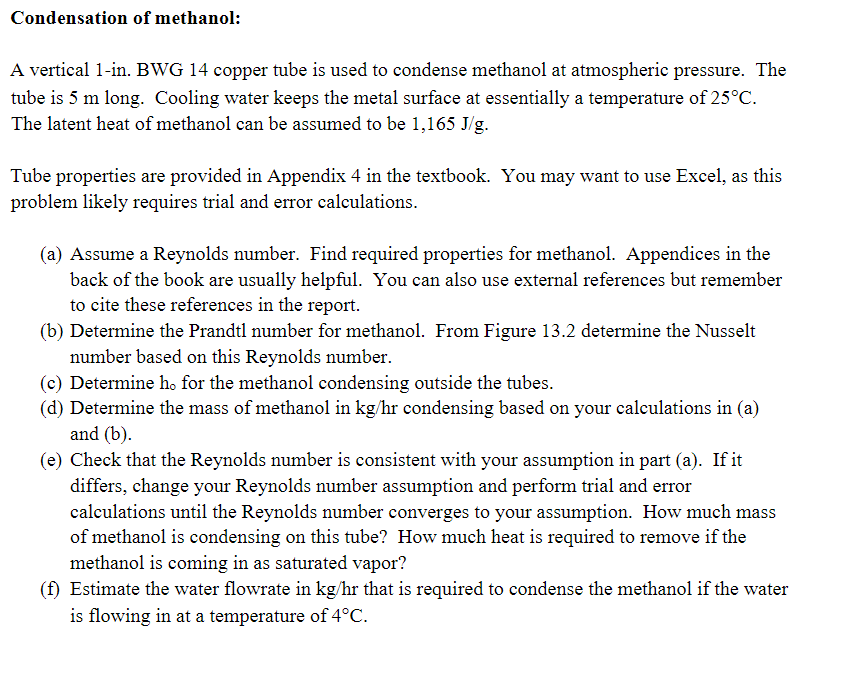Answered step by step
Verified Expert Solution
Question
1 Approved Answer
Please solve this question properly will give like if correct thank you ! Condensation of methanol: A vertical 1-in. BWG 14 copper tube is used

Please solve this question properly will give like if correct thank you !
Condensation of methanol: A vertical 1-in. BWG 14 copper tube is used to condense methanol at atmospheric pressure. The tube is 5m long. Cooling water keeps the metal surface at essentially a temperature of 25C. The latent heat of methanol can be assumed to be 1,165J/g. Tube properties are provided in Appendix 4 in the textbook. You may want to use Excel, as this problem likely requires trial and error calculations. (a) Assume a Reynolds number. Find required properties for methanol. Appendices in the back of the book are usually helpful. You can also use external references but remember to cite these references in the report. (b) Determine the Prandtl number for methanol. From Figure 13.2 determine the Nusselt number based on this Reynolds number. (c) Determine h for the methanol condensing outside the tubes. (d) Determine the mass of methanol in kg/hr condensing based on your calculations in (a) and (b). (e) Check that the Reynolds number is consistent with your assumption in part (a). If it differs, change your Reynolds number assumption and perform trial and error calculations until the Reynolds number converges to your assumption. How much mass of methanol is condensing on this tube? How much heat is required to remove if the methanol is coming in as saturated vapor? (f) Estimate the water flowrate in kg/hr that is required to condense the methanol if the water is flowing in at a temperature of 4CStep by Step Solution
There are 3 Steps involved in it
Step: 1

Get Instant Access to Expert-Tailored Solutions
See step-by-step solutions with expert insights and AI powered tools for academic success
Step: 2

Step: 3

Ace Your Homework with AI
Get the answers you need in no time with our AI-driven, step-by-step assistance
Get Started


